Choosing the Right Pallet Inverter for Vietnam's Demands in Warehouse Space Constraints and Fast-Growing Exports
Running a business in Vietnam today is an exciting challenge. The economy is booming, and export orders are flooding in. But this growth creates a serious problem. I see it every time I visit my clients there. Their warehouses are packed to the ceiling. The cost of industrial land, especially near hubs like Ho Chi Minh City and Haiphong, is skyrocketing. You're constantly fighting for every square meter. This pressure slows down your operations, creates safety risks, and eats into your profits. You know you need a solution, but expanding your facility isn't always an option. You feel stuck, unable to capitalize fully on the opportunities in front of you. What if there was a machine that could solve your space problem while also speeding up your export process?
The best pallet inverter for Vietnam is a compact, high-speed, and versatile machine that can handle diverse load sizes and integrate with existing automation. It directly tackles warehouse space constraints by allowing transfers to space-saving pallets and meets export demands by enabling quick, compliant pallet swapping. This turns a logistical bottleneck into a competitive advantage.
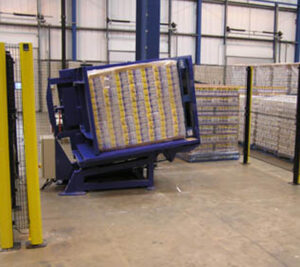
I have spent my entire career in the packing machine industry. I started on the factory floor and eventually built my own company, SHJLPACK. This journey taught me that the right piece of equipment is more than just steel and motors. It is a strategic tool. A pallet inverter is a perfect example of this. It might seem like a simple machine, but its impact on a warehouse's efficiency is profound. It’s not just about flipping a pallet; it's about fundamentally changing your workflow for the better. Let's explore how to choose the right one for the unique demands of the Vietnamese market.
How Can Pallet Inverters Solve Warehouse Space Constraints in Vietnam?
Your warehouse manager just told you there is no more space. You walk through the aisles, and they are tighter than ever. Pallets are double-stacked in staging areas, blocking movement. You are paying high rent for every square meter of your facility in Binh Duong or Bac Ninh, yet it feels like half of it is unusable. This inefficiency is a silent killer of profits. It slows down picking times, increases the risk of accidents, and makes inventory counts a nightmare. You feel the pressure to find a solution, but the cost of new construction or leasing more space is staggering.
A pallet inverter solves these space constraints by maximizing the storage density of your existing facility. It allows you to transfer goods from bulky, standard pallets onto smaller, more efficient in-house pallets or even slip sheets for block stacking. This simple act of swapping pallets can dramatically reduce the footprint of each stored unit, allowing you to fit more products into the same area and reclaim valuable floor space.
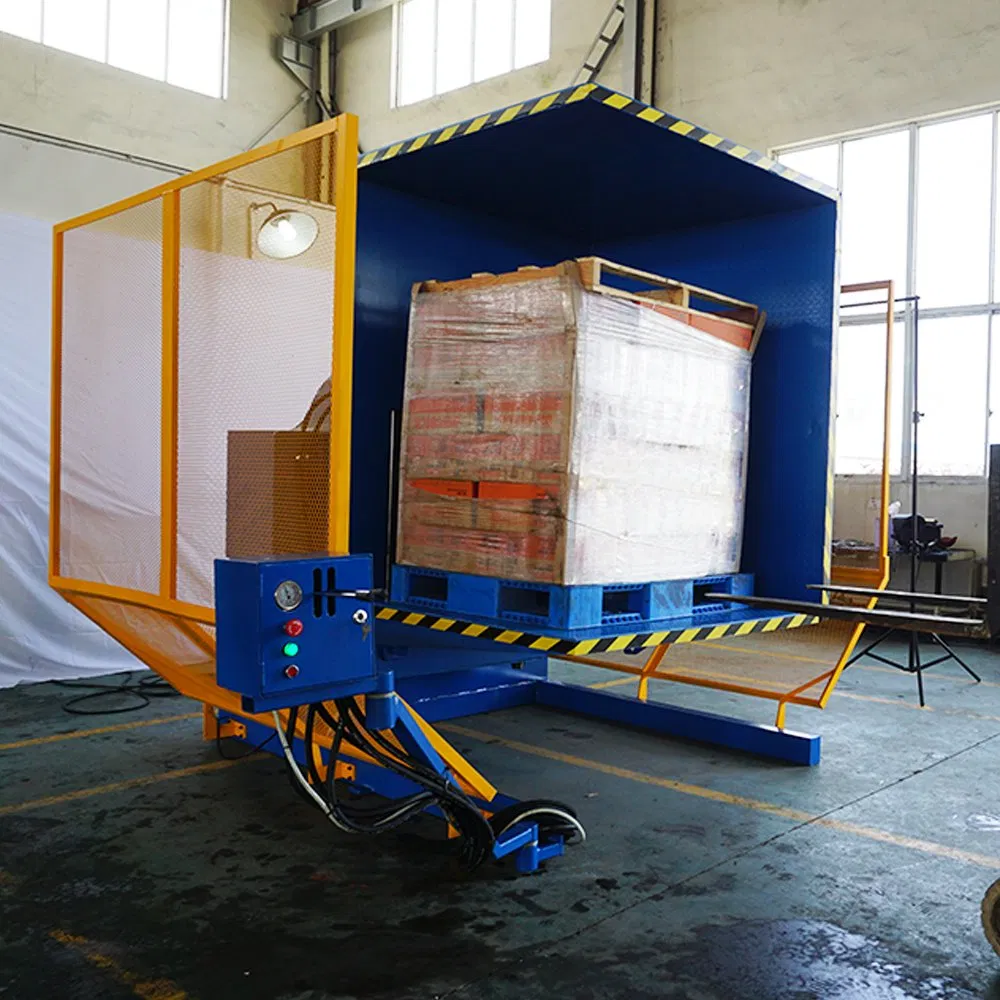
Maximizing Your Cubic Meters, Not Just Square Meters
When we talk about warehouse space, we often think in two dimensions: length and width. But the real asset is your cubic meterage—the total volume. A pallet inverter helps you use this volume more effectively. Let's think about a real-world scenario. Many companies in Vietnam receive raw materials on sturdy wooden pallets measuring 1200x1000 mm. These are necessary for international transport but are often overkill for internal storage. They take up a lot of room in your racking.
By using a pallet inverter at the receiving dock, you can immediately transfer those goods to a smaller, custom-sized plastic pallet, maybe 1000x800 mm. The original wooden pallet is now free to be returned to the supplier or used for an outgoing shipment. Your internal warehouse is now filled with smaller-footprint pallets. This means you can narrow your aisles or fit more pallets into each bay of your racking system.
I remember a client in the electronics industry near Da Nang. They were planning a multi-million dollar warehouse expansion. Their facility was completely full. I went to visit them and saw that their warehouse was filled with different-sized wooden pallets from various suppliers, creating a chaotic and inefficient storage layout. We analyzed their workflow. We suggested they invest in two pallet inverters and standardize their internal storage on a single, smaller plastic pallet size. The result? They were able to increase their storage capacity by nearly 30% within their existing walls. They canceled the expansion project, saving a huge amount of capital that they then reinvested into new production machinery. The pallet inverters paid for themselves in less than six months from the deferred construction cost alone.
Here is a simple comparison of how pallet choice affects space:
| Pallet Type | Standard Size (mm) | Key Feature | Impact on Space |
|---|---|---|---|
| Wooden Pallet | 1200 x 1000 x 150 | Robust, common for shipping | Bulky, takes up significant space |
| Plastic Pallet | 1200 x 800 x 145 | Durable, nestable when empty | Slightly smaller footprint, better for reuse |
| Slip Sheet | 1200 x 1000 x 1 | Thin fiber or plastic sheet | Eliminates pallet height, enables block stacking |
By switching from wooden pallets to slip sheets for long-term storage, you reclaim almost 150mm of vertical space per level. Over a rack with five levels, that is 750mm of extra space—enough for an entire additional storage level in some systems. This is how a pallet inverter transforms your warehouse from a cost center into a highly optimized asset.
Which Pallet Inverter Features are Critical for Vietnam's Fast-Growing Export Market?
You have just won a major contract to supply your product to a big retailer in the United States. It's a huge win for your company. But then you read the fine print in the logistics requirements. They demand that all goods arrive on their specific blue rental pallets. Or, for a European customer, all pallets must be heat-treated and stamped according to ISPM 15 regulations. Your entire inventory is on your standard, local wooden pallets. The thought of manually re-stacking thousands of boxes is overwhelming. It would take days, risk damaging the products, and you could easily miss the vessel's cutoff time, jeopardizing the entire order.
For Vietnam's fast-paced export market, the most critical pallet inverter features are versatility, speed, and precision control. You need a machine that can handle various pallet types and sizes, from standard Asian pallets to Euro-pallets and US pallets. It must have a fast cycle time to keep up with high-volume shipments and adjustable clamping pressure to safely handle everything from sturdy machine parts to delicate food items.
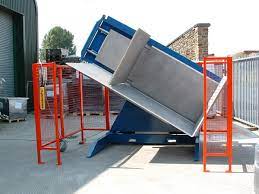
From Local Standard to Global Compliance
The world of international trade runs on standards. As an engineer, I appreciate the importance of precision and rules. For exporters in Vietnam, one of the most important rules is ISPM 15. This regulation requires that all solid wood packaging, including pallets, be heat-treated or fumigated to prevent the spread of pests. A pallet inverter is your key to effortless compliance. You can run your entire internal operation using low-cost, untreated local pallets. Then, as the final step before loading a container, you use the inverter to swap the load onto a fully compliant, stamped ISPM 15 pallet. This process takes about 60-90 seconds. It simplifies your pallet inventory management and eliminates the risk of a shipment being rejected at customs, which can be a financial disaster.
Speed and Versatility as a Competitive Edge
Your customers have different needs. A client in Japan might require a 1100x1100 mm pallet, while one in Germany needs an 800x1200 mm Euro-pallet. A modern pallet inverter should have an adjustable loading table and clamps to accommodate these variations easily. This flexibility means you can say "yes" to any customer's request, making you a more attractive supplier.
Speed is just as important. Let's look at the numbers.
| Method | Time per Pallet | Time for a 40ft Container (20 pallets) | Labor Required | Risk of Damage |
|---|---|---|---|---|
| Manual Restacking | 15-20 minutes | 5 - 6.7 hours | 2-3 people | High |
| Pallet Inverter | 1.5 minutes | 30 minutes | 1 operator | Very Low |
As you can see, the time savings are enormous. What took a team half a day can now be done by one person in 30 minutes. This is critical when you have multiple containers to load each day. This speed translates directly into higher throughput and the ability to handle more orders without increasing your headcount. One of my proudest moments was helping a coffee exporter in the Central Highlands. They were dealing with fragile bags of premium coffee beans. Manual handling often led to tears and spills. We supplied them with a pallet inverter that had very sensitive pressure controls. They could securely grip a full pallet of coffee bags and invert it without a single bean being lost. Their product damage rate dropped to almost zero for that part of the process, and they could load containers three times faster. That is the kind of impact the right technology can have.
What is the ROI of a Pallet Inverter in a High-Volume Vietnamese Warehouse?
As a business owner, I know that every significant purchase must be justified. You look at the quotation for a new pallet inverter, and your first thought is about the cost. It is a significant capital expenditure. You ask yourself, "Is this just another expense, or is it a true investment that will pay me back?" You might be tempted to stick with your current manual methods, thinking you're saving money. But the hidden costs of labor, product damage, wasted space, and inefficiency are draining your resources every single day.
The Return on Investment (ROI) for a pallet inverter in a high-volume Vietnamese warehouse is remarkably strong and is often realized in less than two years. This ROI is driven by direct, measurable savings in labor, reduced product damage, lower pallet management costs, and the immense value of optimized warehouse space.
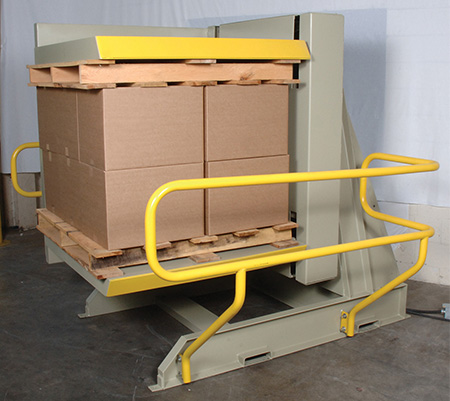
Breaking Down the Financial Benefits
Let's move beyond theory and look at a concrete example. Imagine a typical export-focused factory in Vietnam handling 50 pallets per day that need to be swapped for shipping.
1. Labor Savings
- Manual Method: Requires 2 workers, taking about 15 minutes per pallet.
50 pallets/day * 0.25 hours/pallet = 12.5 hours/day. This is nearly two full-time employees just for restacking.
- Pallet Inverter Method: Requires 1 operator, taking 1.5 minutes per pallet.
50 pallets/day * 0.025 hours/pallet = 1.25 hours/day.
- The Savings: You are effectively reassigning over 11 hours of labor every single day to more value-added tasks. In a year, this translates into thousands of dollars saved on direct labor costs.
2. Product Damage Reduction
Manual handling is risky. Boxes get dropped, bags tear, and contents get crushed. It's common for businesses to see a 1-2% damage rate during this process. A pallet inverter handles the entire load as a single, stable block, dramatically reducing this risk.
- Let's assume an average pallet value of $2,000.
- Manual Damage (1.5% rate):
50 pallets/day * $2,000/pallet * 1.5% damage = $1,500/dayin potential losses. - Inverter Damage (0.1% rate):
50 pallets/day * $2,000/pallet * 0.1% damage = $100/day. - The Savings: You could be saving over $1,400 per day in damaged goods. This alone can often justify the investment.
3. Pallet Management Savings
Many companies use pallet rental services like CHEP or Loscam for exports. You pay a daily fee for these pallets. The faster you can get your product off your internal pallets and onto these rental pallets for shipment, the less you pay. An inverter also allows you to purchase cheaper, non-export grade pallets for all internal use, saving on procurement costs. I once worked with a large beverage company that saved over $50,000 in their first year just by optimizing their pallet rental cycle with an inverter.
When you add up these three areas—labor, damage, and pallet costs—the payback period for a pallet inverter is often between 12 and 18 months. And this calculation doesn't even include the most significant benefit for many Vietnamese businesses: the value of the reclaimed warehouse space, which defers the need for massive capital investment in expansion.
How to Integrate Pallet Inverters with Existing Automation in Vietnamese Factories?
Your factory is becoming smarter. You have invested in conveyor systems to move products, maybe you're even using AGVs (Automated Guided Vehicles), and your whole operation is managed by a Warehouse Management System (WMS). The idea of adding a standalone machine that requires manual loading and unloading feels like a step backward. You're worried it will become an "island of automation," a new bottleneck that disrupts the smooth flow you have worked so hard to create. A machine that doesn't talk to your other systems can cause more problems than it solves.
Modern pallet inverters are designed for seamless integration into automated environments. The key is choosing a model with a robust Programmable Logic Controller (PLC) that can communicate with your central WMS or MES. This allows the inverter to become a fully connected, intelligent node in your factory's logistics network, operating automatically without human intervention.
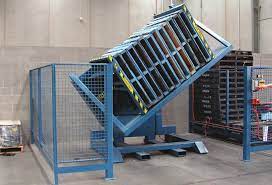
The Language of Machines: PLC and WMS Communication
At its core, integration is about communication. The pallet inverter needs to speak the same language as your other systems. This is achieved through its PLC. Think of the PLC as the inverter's brain. At SHJLPACK, we build our machines with PLCs from trusted brands like Siemens or Allen-Bradley, which can use standard industrial communication protocols like PROFINET or EtherNet/IP.
Here’s how a fully automated integration works in practice:
- Arrival: A palletized load travels down a conveyor line and arrives at the inverter's infeed section.
- Identification: A barcode scanner reads the pallet's label. This information is sent to the WMS.
- Command: The WMS checks its database. It knows this is a product destined for export to Germany. It sends a command to the inverter's PLC: "Swap this load from internal pallet type 'A' to Euro-pallet type 'B'."
- Execution: The inverter automatically accepts the pallet, clamps the load securely, performs the 180-degree inversion, and places the load onto a new Euro-pallet, which was fed into the machine from a separate dispenser.
- Confirmation: The old pallet is ejected onto a takeaway conveyor. The newly palletized load moves to the outbound conveyor. The inverter's PLC sends a "task complete" signal back to the WMS.
This entire sequence happens without a single person touching the product. It is fast, efficient, and error-free.
Physical and Strategic Integration
This level of automation requires careful planning. It's not just about software. You need to consider the physical layout. Will the inverter be floor-level to be fed by AGVs, or will it be raised to match the height of your existing conveyors? You need to plan for safety features like light curtains and physical guarding to ensure the automated cell is safe for workers.
This is why my company's slogan is "TOTAL SOLUTION FOR WRAPPING MACHINE." We don't just sell you a machine in a crate. We see ourselves as strategic partners. I personally work with my engineering team and the client's operations team. We study your layout, understand your workflow, and help you design the integration. This collaboration is crucial. A successful integration project transforms the pallet inverter from a simple machine into a powerful component of your smart factory strategy, paving the way for further digitalization and efficiency gains.
Conclusion
A pallet inverter is a strategic asset for Vietnam's growing economy. It solves space, speed, and compliance challenges, delivering a fast ROI and future-proofing your warehouse operations.




